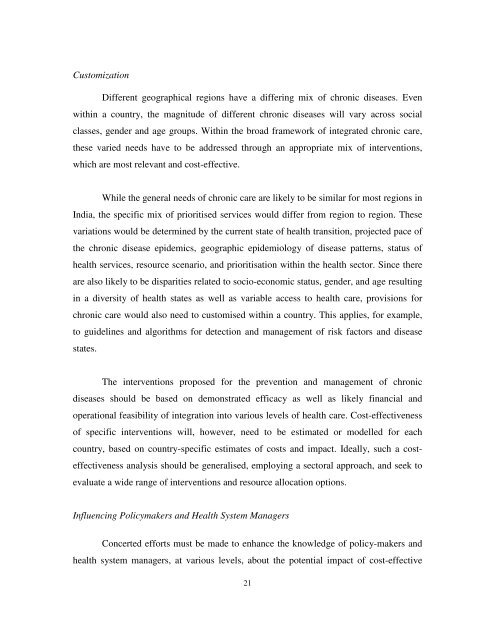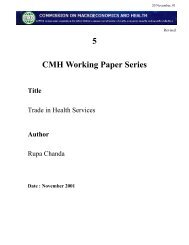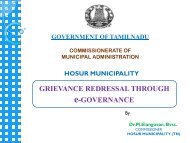prevention and control of non-communicable diseases - icrier
prevention and control of non-communicable diseases - icrier
prevention and control of non-communicable diseases - icrier
You also want an ePaper? Increase the reach of your titles
YUMPU automatically turns print PDFs into web optimized ePapers that Google loves.
Customization<br />
Different geographical regions have a differing mix <strong>of</strong> chronic <strong>diseases</strong>. Even<br />
within a country, the magnitude <strong>of</strong> different chronic <strong>diseases</strong> will vary across social<br />
classes, gender <strong>and</strong> age groups. Within the broad framework <strong>of</strong> integrated chronic care,<br />
these varied needs have to be addressed through an appropriate mix <strong>of</strong> interventions,<br />
which are most relevant <strong>and</strong> cost-effective.<br />
While the general needs <strong>of</strong> chronic care are likely to be similar for most regions in<br />
India, the specific mix <strong>of</strong> prioritised services would differ from region to region. These<br />
variations would be determined by the current state <strong>of</strong> health transition, projected pace <strong>of</strong><br />
the chronic disease epidemics, geographic epidemiology <strong>of</strong> disease patterns, status <strong>of</strong><br />
health services, resource scenario, <strong>and</strong> prioritisation within the health sector. Since there<br />
are also likely to be disparities related to socio-economic status, gender, <strong>and</strong> age resulting<br />
in a diversity <strong>of</strong> health states as well as variable access to health care, provisions for<br />
chronic care would also need to customised within a country. This applies, for example,<br />
to guidelines <strong>and</strong> algorithms for detection <strong>and</strong> management <strong>of</strong> risk factors <strong>and</strong> disease<br />
states.<br />
The interventions proposed for the <strong>prevention</strong> <strong>and</strong> management <strong>of</strong> chronic<br />
<strong>diseases</strong> should be based on demonstrated efficacy as well as likely financial <strong>and</strong><br />
operational feasibility <strong>of</strong> integration into various levels <strong>of</strong> health care. Cost-effectiveness<br />
<strong>of</strong> specific interventions will, however, need to be estimated or modelled for each<br />
country, based on country-specific estimates <strong>of</strong> costs <strong>and</strong> impact. Ideally, such a costeffectiveness<br />
analysis should be generalised, employing a sectoral approach, <strong>and</strong> seek to<br />
evaluate a wide range <strong>of</strong> interventions <strong>and</strong> resource allocation options.<br />
Influencing Policymakers <strong>and</strong> Health System Managers<br />
Concerted efforts must be made to enhance the knowledge <strong>of</strong> policy-makers <strong>and</strong><br />
health system managers, at various levels, about the potential impact <strong>of</strong> cost-effective<br />
21

















